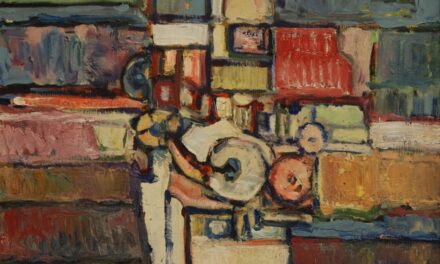In the realm of digital art, the concept of layers serves as a fundamental building block that allows artists to create complex and visually engaging compositions. Layers can be thought of as transparent sheets stacked on top of one another, each containing different elements of the artwork. This method of working provides artists with the flexibility to manipulate individual components without affecting the entire piece.
For instance, an artist can adjust the colour, opacity, or position of a single layer while leaving others untouched, enabling a more refined and controlled approach to creation. This non-destructive editing capability is one of the primary advantages of digital art over traditional mediums, where alterations often require more effort and can lead to irreversible changes. Moreover, layers facilitate experimentation and creativity.
Artists can easily try out various ideas by adding or removing layers, allowing for a more fluid creative process. This encourages exploration and innovation, as artists can test different compositions, colour schemes, and styles without the fear of ruining their work. The ability to group layers, apply effects selectively, and create masks further enhances this creative freedom.
As a result, understanding how to effectively use layers is essential for any digital artist aiming to produce intricate and polished artworks.
Summary
- Layers in digital art allow for the separation and manipulation of different elements within a composition
- Utilising layers can add depth and dimension to digital environments, creating a more immersive and realistic scene
- Building complex environments using layers involves the use of foreground, middle ground, and background layers to create depth and perspective
- Incorporating lighting and shadow effects through layering can enhance the realism and atmosphere of digital art
- Adding textures and patterns to different layers can add depth and visual interest to digital art, creating a more tactile and dynamic composition
Utilising layers to create depth in digital environments
Creating depth in digital environments is a crucial aspect of making artwork feel immersive and engaging. Layers play a pivotal role in achieving this depth by allowing artists to separate elements based on their spatial relationships. For instance, foreground elements can be placed on one layer, while background elements reside on another.
This separation not only helps in organising the artwork but also aids in establishing a sense of perspective. By manipulating the size, colour saturation, and detail of these layers, artists can create a convincing illusion of three-dimensional space. Additionally, layering can be used to simulate atmospheric effects that contribute to depth perception.
For example, an artist might employ a gradient layer to represent fog or haze in the background, softening the details and colours as they recede into the distance. This technique mimics how our eyes perceive distant objects in real life, where they appear less defined and more muted. By thoughtfully arranging layers and applying such effects, artists can craft environments that draw viewers in, inviting them to explore the intricacies of the scene.
Techniques for building complex environments using layers
Building complex environments in digital art requires a strategic approach to layering that enhances both visual interest and coherence. One effective technique is to start with a solid foundation by creating a base layer that establishes the primary elements of the environment, such as terrain or architecture. Once this base is in place, artists can progressively add layers for additional details like foliage, structures, or atmospheric elements.
This step-by-step approach allows for a clear vision of how each component interacts within the overall composition. Another technique involves using clipping masks and adjustment layers to refine specific areas without altering the entire artwork. Clipping masks allow artists to apply effects or adjustments only to the layer directly beneath them, which is particularly useful for adding highlights or shadows to specific objects without affecting surrounding elements.
Adjustment layers enable artists to modify colours and tones globally or locally, providing further control over the final appearance of the environment. By employing these techniques, artists can create intricate scenes that are rich in detail and complexity while maintaining a cohesive visual narrative.
Incorporating lighting and shadow effects through layering
Lighting and shadow are essential components in creating mood and atmosphere within digital environments. Layers provide an effective means of incorporating these elements into artwork. By creating separate layers for light sources and shadows, artists can manipulate their intensity and placement independently, allowing for greater control over the overall composition.
For instance, an artist might create a layer dedicated to sunlight filtering through trees, adjusting its opacity and blending mode to achieve a realistic effect. Shadows can also be effectively managed through layering techniques. By placing shadow elements on their own layers beneath the objects casting them, artists can easily adjust their size, shape, and opacity without disturbing the main subjects.
This separation not only enhances realism but also allows for dynamic lighting scenarios where shadows shift as light sources change. The interplay between light and shadow adds depth and dimension to digital environments, making them feel more lifelike and engaging.
Using textures and patterns to add depth to digital art
Textures and patterns are invaluable tools for adding depth and richness to digital art. By incorporating various textures into different layers, artists can create a tactile quality that enhances the visual experience. For example, a layer featuring a rough texture can be applied to rocky surfaces or tree bark, while a smooth texture might be used for water or glass elements.
This differentiation not only adds realism but also invites viewers to engage with the artwork on a sensory level. Patterns can also play a significant role in depth creation. By layering patterned elements strategically within an environment—such as tiled floors or patterned fabrics—artists can guide the viewer’s eye through the composition while adding visual interest.
Furthermore, using blending modes allows artists to integrate these textures seamlessly into their artwork, creating harmonious interactions between different elements. The thoughtful application of textures and patterns ultimately contributes to a more immersive experience for viewers.
Tips for organising and managing layers effectively
Naming Layers Descriptively
One practical tip is to name each layer descriptively based on its content or function. This simple practice can save time when navigating through numerous layers, especially in complex compositions where multiple elements are at play.
Grouping and Colour Coding Layers
Additionally, grouping related layers together can help streamline workflows; for instance, all foreground elements could be placed within one group while background elements reside in another. Another useful strategy is to utilise colour coding for layers or groups based on their significance or status within the project. Many digital art programmes allow users to assign colours to layers, making it easier to identify which elements require attention or adjustment at a glance.
Maintaining a Clutter-Free Workspace
Regularly reviewing and cleaning up unused or redundant layers is also advisable; this not only declutters the workspace but ensures that artists remain focused on their creative process without unnecessary distractions.
Enhancing depth through the use of foreground, middle ground, and background layers
The concept of foreground, middle ground, and background is fundamental in creating depth within digital environments. Each layer serves a distinct purpose in establishing spatial relationships among elements in the composition. The foreground typically contains the most detailed and vibrant elements that draw immediate attention; these could include characters or prominent objects that anchor the viewer’s gaze.
By placing these elements on separate layers, artists can manipulate them independently to enhance their impact. The middle ground serves as a transitional space that connects the foreground with the background. This layer often contains less detailed elements that provide context without overwhelming the viewer’s focus on the main subjects.
Finally, the background layer usually features softer colours and less detail, creating a sense of distance that reinforces depth perception. By carefully considering how each layer interacts with one another—adjusting opacity, scale, and detail—artists can create a harmonious composition that effectively guides viewers through the visual narrative.
Exploring advanced layering techniques for creating intricate digital environments
As artists become more proficient with layering techniques, they may wish to explore advanced methods that push the boundaries of their digital environments further. One such technique is using dynamic brushes that respond to pressure or tilt when painting on separate layers. This allows for more organic textures and details that can enhance realism within complex scenes.
Additionally, employing 3D models as reference points on specific layers can provide accurate perspectives and proportions when creating intricate environments. Another advanced technique involves using layer styles such as bevels, glows, or shadows to add depth without extensive manual detailing. These styles can be applied selectively to enhance certain elements while maintaining overall cohesion within the artwork.
Furthermore, experimenting with blending modes allows artists to create unique interactions between colours and textures across different layers—resulting in unexpected yet captivating visual effects. By embracing these advanced techniques, artists can elevate their digital environments into realms of complexity and intrigue that captivate viewers’ imaginations. In conclusion, mastering the concept of layers in digital art is essential for creating depth and complexity within compositions.
By utilising various techniques—from organising layers effectively to incorporating lighting effects—artists can craft intricate environments that engage viewers on multiple levels. As technology continues to evolve, so too will the possibilities for layering in digital art; thus, embracing these methods will undoubtedly enhance an artist’s ability to convey their creative vision with clarity and impact.
When delving into the world of digital art, it is essential to understand various techniques that can enhance the depth and complexity of your creations. One such technique is oblique projection, which offers a unique perspective to your artwork. An article on Think of Art provides an insightful introduction to this art technique, explaining how it can be used to add a sense of dimension to your digital environments. By incorporating oblique projection into your work, you can create visually striking pieces that captivate viewers and immerse them in your artistic world.
FAQs
What is the purpose of using layers in digital art?
Using layers in digital art allows artists to separate different elements of their artwork, making it easier to edit and manipulate individual parts without affecting the rest of the composition. This can be particularly useful when creating complex environments with multiple elements.
How do layers help in creating depth in digital art?
By using layers, artists can place different elements of the composition at varying distances from the viewer, creating a sense of depth. This can be achieved by placing foreground, midground, and background elements on separate layers and adjusting their size, position, and opacity.
What are some common techniques for using layers to build complex environments in digital art?
Some common techniques include using separate layers for different elements such as foreground objects, midground elements, and background scenery. Artists can also use layers to add atmospheric effects, such as fog or haze, to create a sense of depth in the environment.
How can artists use layers to add detail and texture to their digital environments?
By using layers, artists can add intricate details and textures to different elements of their digital environments. For example, they can use separate layers for foliage, textures on buildings, or patterns in the sky, allowing for greater control and realism in the final artwork.
What are some software tools that support the use of layers for building complex environments in digital art?
Popular digital art software such as Adobe Photoshop, Procreate, and Clip Studio Paint all support the use of layers for creating complex environments. These tools offer a range of features for manipulating and organising layers to achieve depth and complexity in digital artwork.


